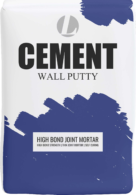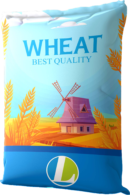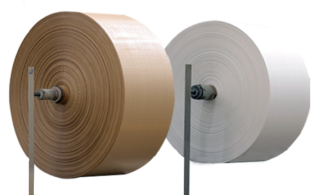
Polyethylene VS Polypropylene Bags: What’s the Difference?
The meaning of polypropylene vs. polyethylene bags lies in the distinction between the two materials and their respective applications in bag production.
Polypropylene bags are made from polypropylene, a thermoplastic polymer known for its toughness, strength, and resistance to heat and chemicals.
Ultimately, the choice among the two types of bags depends on the intended use and the desired properties for the specific application. The following guide will help you understand the actual difference between polyethylene versus polypropylene bags.
Chemical Structure & Properties of Polypropylene VS Polyethylene Bags:
Polypropylene is a semi-crystalline thermoplastic polymer with a linear structure. PP bag is resistant to fatigue and can withstand higher temperatures compared to polyethylene. It is commonly used in applications. If interested in buying a PP woven bag, BOPP bag or PP bag - Lincon Polymers Private Limited has you wrapped.
Polyethylene is a versatile thermoplastic polymer with a simple linear structure. It is characterized by its flexibility, low density, and excellent impact resistance. PE is available in various forms, including high-density polyethylene (HDPE) and low-density polyethylene (LDPE), each offering unique properties and applications.
Pros & Cons of Polyethylene VS Polypropylene Bags
PP and PE bags are widely known for their unique offerings. Here are the key pros and cons of polyethylene vs polypropylene bags. Let's have a look!
Polyethylene Pros & Cons
Pros of PE Bags:
Flexible
Moral strength
Lightweight
Cost-effective
Cons of PE Bags:
Less durability
High environmental impact
Limited Chemical resistance
Polypropylene Pros & Cons
Pros of PP Bags:
High tensile strength
May be resistant to other elements
Versatile for all applications
Cons of PP Bags:
UV sensitivity
High melting point
Limited flexibility
The Common Uses of Polypropylene VS Polyethylene Bags
Both polypropylene and polyethylene are widely used in the production of bags due to their durability and versatility. Here are the common uses of polypropylene vs. polyethylene bags:
Polypropylene Bags:
Grocery bags
Tote bags
Packaging bags
Promotional bags
Bulk bags
Polyethylene Bags:
Retail bags
Trash bags
Disposable Food
Difference Between Polyethylene and Polypropylene Bags
The table below will help you understand the main differences between PE and PP, allowing you to make an informed decision when selecting a packaging bag for your business. So, keep an eagle eye out!
Aspects | Polyethylene Packaging Bag | Polypropylene Packaging Bag |
History | Invented in 1898 by German chemist Hans von Pechmann, but commercial production began in the 1930s with low-density polyethylene. | Invented in 1954 by Italian chemist Giulio Natta, with commercial production starting shortly afterward. |
Structure | A bag made up of ethylene monomers. | A Bag made up of propylene monomers. |
Melting Point | Lower melting point | High melting point |
Market Size | Polyethylene is one of the most widely produced plastics globally, with a market size of over 100 million metric tons annually. | Polypropylene is the second most widely produced plastic after polyethylene, with a global market size of over 70 million metric tons annually. |
Types | LDPE, LLDPE , HDPE and HMDPE. | Standard PP bags, BOPP laminated bags, block bottom bags, gusseted bags, and more.. |
Strength | Good tensile strength and flexibility. | High strength |
Applications | Grocery stores, food packaging, shopping bags, retail bags, trash bags, etc. | Packaging grains, seeds, and fertilizers, as well as in construction for sandbags and industrial packaging. |
Environmental | Contribution to plastic pollution and environmental degradation, leading to increased efforts for recycling. | Compared to polyethylene bags, polypropylene bags are easy to recycle, reusable, and follow a sustainable approach. |
Conclusion:
If you are looking for polypropylene bags, Lincon Polymers Private Limited is a great option because of its expertise and high-quality products. Their polypropylene bags are extremely strong, durable, and reliable, making them an excellent choice for a variety of packaging and storage applications. Lincon Polymers Private Limited is a leading BOPP bag manufacturer in South Asia, having vast experience in providing business-centric packaging solutions. Get in touch with our team for further details.
Our Products
Providing the most versatile and advanced products under one roof in the Woven Industry







